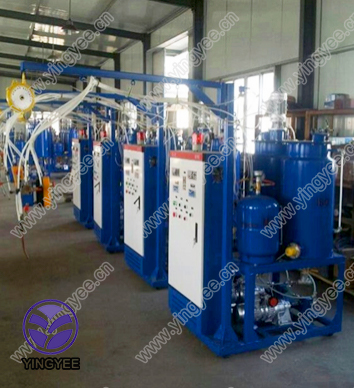Roll Forming in Truck Chassis Production An Innovative Approach
The automotive industry has undergone remarkable advances in technology, efficiency, and sustainability in recent decades. Among these innovations, roll forming has emerged as a critical manufacturing process for truck chassis production. The roll forming technique is prized for its ability to produce high-strength, lightweight components that enhance the overall performance of vehicles while optimizing production costs. This article explores the benefits, processes, and future of roll forming in the context of truck chassis manufacturing.
Understanding Roll Forming
Roll forming is a continuous bending process in which metal strips or sheets are passed through a series of rollers to achieve the desired cross-sectional profile. This technology can work with various materials, including steel, aluminum, and other alloys. The primary advantage of roll forming lies in its ability to create complex shapes with consistent dimensions and high precision.
In truck chassis manufacturing, roll forming provides numerous advantages. The chassis must endure significant stresses and strains during operation, requiring materials that offer both strength and weight savings. Roll-formed components are typically stronger than those produced by conventional methods due to the uniform distribution of material and improved structural integrity. Moreover, since roll forming generates minimal waste, it aligns well with the industry's increasing focus on sustainability.
Advantages of Roll Forming in Truck Chassis Production
1. Material Efficiency Roll forming maximizes material usage, resulting in less scrap metal compared to other fabrication methods. This efficiency not only reduces costs but also minimizes environmental impact, making it a suitable choice for modern manufacturing processes.
2. Cost-Effectiveness Once a roll forming line is set up, it can process large quantities of material rapidly. This high throughput reduces production costs per unit, which is particularly beneficial for truck manufacturers aiming to remain competitive in a global market.
3. Versatility Roll forming can produce a wide range of shapes and sizes, allowing manufacturers to create custom designs tailored to specific chassis applications. This adaptability is crucial in the truck industry, which demands a variety of chassis designs for different models and uses.
roll forming truck chassis
4. Quality and Consistency The automated nature of roll forming ensures high precision, resulting in components that meet strict quality standards. This consistency is vital for safety and performance in truck manufacturing.
5. Strength and Lightweighting By using advanced materials and manufacturing techniques, roll forming can produce chassis components that are both lightweight and strong. This not only improves fuel efficiency but also enhances the overall performance of the vehicle.
Challenges and Considerations
Despite its many advantages, the roll forming process is not without challenges. Engineers and manufacturers must carefully design the tooling and production techniques to handle the specific characteristics of the materials being used. Additionally, the initial setup and tooling costs can be high, which may pose a barrier to entry for smaller manufacturers.
Another consideration is the need for skilled labor. While automation plays a significant role in roll forming, having knowledgeable personnel to oversee the operation, maintenance, and troubleshooting of the machinery is essential for optimal performance.
The Future of Roll Forming in Truck Chassis Manufacturing
As the automotive industry continues to evolve, the role of roll forming is expected to expand further. With advances in materials science, the use of lightweight alloys becomes more prevalent, pushing the boundaries of what can be achieved through roll forming. Additionally, the rise of electric vehicles (EVs) has generated new demand for efficient chassis designs that support battery integration and weight optimization.
In conclusion, roll forming is revolutionizing truck chassis production by enhancing efficiency, reducing costs, and contributing to sustainability goals. As manufacturers look to innovate and adapt to changing market demands, the roll forming process will likely cement its place as a vital technology in the quest for advanced, reliable, and high-performance trucks. Embracing these techniques will ensure that the industry not only meets the challenges of today but also pioneers solutions for a greener, more efficient future.







